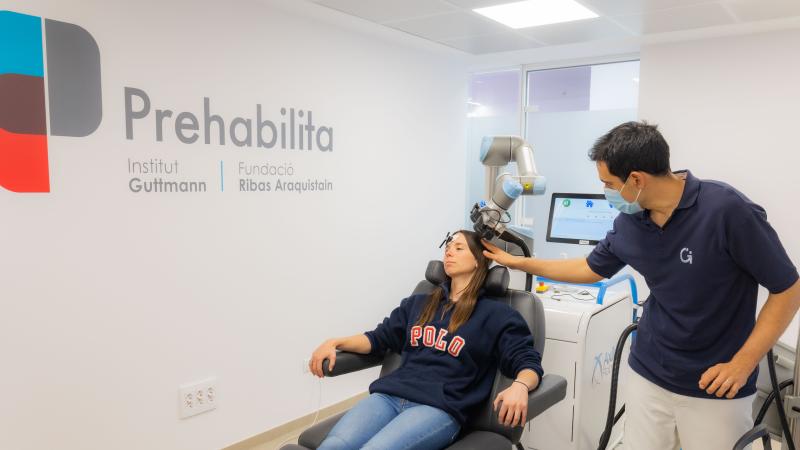The PREHABILITA project demonstrates the feasibility of non-invasive brain stimulation as an intervention to minimise the sequelae of brain tumour surgery.
The PREHABILITA project demonstrates the feasibility of non-invasive brain stimulation as an intervention to minimise the sequelae of brain tumour surgery.

A study of the PREHABILITA project, published in the Journal of Neuro-Oncology, demonstrates for the first time the viability of the application of a non-invasive brain stimulation protocol prior to brain tumour surgery in order to minimize the sequelae of the surgery. The results of the study - the first of its kind in the world - also suggest that the use of functional magnetic resonance imaging to select the area of the brain to be stimulated could optimise the results of the procedure.
The aim of PREHABILITA is to carry out non-invasive brain neurostimulation techniques prior to brain tumour surgery, in order to relocate the functions of the area that will be affected by the surgery to other safe areas of the brain. This avoids the motor and cognitive sequelae of the surgery and ensures the largest possible resection of the tumour. Studies to date have demonstrated the efficacy of invasive neuromodulation, which requires a surgery that increases the cost and the possibility of adverse events. ‘The application of non-invasive interventions had only been analysed in two isolated cases, without conclusive results on their feasibility and efficacy in achieving neuroplastic changes in the brain,’ according to Leonardo Boccuni, first author of the paper.
The paper now published reports the experience of 10 patients who underwent a two to four-week non-invasive prehabilitation protocol between July 2021 and March 2023, with one or two daily sessions combining neuromodulation and an intensive one-hour training of language or motor tasks, depending on the function potentially affected by the surgery. "Studies conducted so far with invasive techniques included protocols with up to six hours of daily training, but those with non-invasive techniques included no training or a maximum of 10 minutes per day," explains Boccuni.
Surgeries were performed at Hospital del Mar, Hospital Vall d'Hebron, Hospital Universitario Mútua Terrassa and HM Nou Delfos, all in the province of Barcelona. In five of the 10 patients, the tumour threatened the motor function of the upper limbs, while in the other half, language and other cognitive functions were at risk. The results demonstrate for the first time the feasibility of such a protocol prior to brain tumour surgery, with optimal adherence to treatment and the absence of intervention-related adverse effects. In all cases, clinical outcomes related to motor and cognitive function were stable or significantly improved. An aspect to be explored in further studies is to determine the role of treatment intensity on these outcomes.
Selection of the brain stimulation point
On the other hand, the research team also aimed to test the validity of functional MRI prior to surgery as a criteria for selecting the area of the brain to be stimulated. Currently, the choice of the area can be guided by 3 criteria: 1) anatomical (the location of the tumour in the brain); 2) data on the activation of brain areas obtained by transcranial magnetic stimulation (TMS); and 3) information obtained by functional magnetic resonance imaging (fMRI). The results indicate that the most relevant neuroplastic changes occurred when the choice of the brain area to stimulate was based on the information provided by the MRI. "This shows that neuroimaging data is a valid strategy to follow and that the selection criteria of the stimulation point plays a determining role in the clinical outcome," concludes Kilian Abellaneda, PhD in Neurosciences and co-principal investigator of PREHABILITA.




